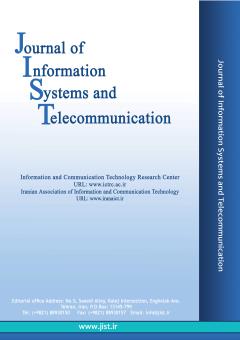Study and Realization of an Alarm System by Coded Laser Barrier Analyzed by the Wavelet Transform
Subject Areas : Signal Processing
meriane brahim
1
![]() ,
Salah Rahmouni
2
,
Issam Tifouti
3
,
Salah Rahmouni
2
,
Issam Tifouti
3
1 - University of Batna 2 (UB2). Algeria, Advanced Electronics Laboratory
2 - Higher School of Technological Education Skikda ENSET. Laboratory (LPCBM) Algeria.
3 - Higher School of Technological Education Skikda ENSET. Laboratory (LPCBM) Algeria.
Keywords: wavelet transform, Lasers Sources, Radio frequency, Laser Coded Barriers, Alarm System,
Abstract :
This article introduces the study and realization of the laser barrier alarm system, after the laser is obtained by an electronic card, the wireless control system is connected to the control room to announce the application in real time, and the laser is used in many applications fields, from industry to medicine, in this article on the basis of Industrial applications such as laser barrier. It uses an alarm system to detect and deter intruders. Basic security includes protecting the perimeter of a military base or a safety distance in unsafe locations or near a government location. The first stage secures surrounding access points such as doors and windows; The second stage consists of internal detection with motion detectors that monitor movements, In this article, we adopt the embodiment of a coded laser barrier that is transmitted between two units, processes the signal, compares the agreed conditions, and to be high accuracy, we suggest using wavelet transmission to process the received signal and find out the frequencies that achieve alarm activation considering that the transmitted signal They are pulses, but after analysis with a proposed algorithm, we can separate the unwanted frequencies generated by the differential vibrations in order to arrive at a practically efficient system.
[1] Muhammad Asyraf Zainal Arifin “Automation Security System with Laser Lights Alarm on Web Pages and Mobile Apps ” 978-1-5386-8546-4/19/$31.00 ©2019 IEEE.
[2] A. S. Life. 2019’s Best Home Security Systems. Available:https://www.asecurelife.com/best-home-security-system/,Accessed on 7/1/2019.
[3] A. Tseloni, R. Thompson, L. Grove, N. Tilley, and G. Farrell, "The effectiveness of burglary security devices," Security Journal, vol. 30, pp. 646-664, 2017.
[4] Ashis Rai ‘’ Low Cost Laser Light Security System in Smart Home ‘’ 978-1-7281-2443-8/19/$31.00 ©2019 IEEE.
[5] Arianne B ‘’ Design and Implementation of an Arduino-Based Security System Using Laser Light ‘’ LPU-Laguna Journal of Engineering and Computer Studies Vol. 4 No. 2 October 2019.
[6] S.Rahmouni, L. Zighed, S.Chaguetmi, M. Daoudi, M. Khelifa, M. Karyaoui, R. Chtourou. ‘’ Correlation between photoluminescence and ellipsometric measurements of porous silicon layers‘’.(Optoelectron. Adv. Mat.) . Vol.12, 9-10 ; P 553-558. (2018).
[7] Md. Moyeed Abrar ‘’ Design and Implementation of AstableMultivibrator using 555 Timer ‘’ IOSR Journal of Electrical and Electronics Engineering (IOSR-JEEE) , Volume 12, Issue 1 Ver. II (Jan. – Feb. 2017), PP 22-29.
[8] J. Kim “Time-frequency characterization of hand-transmitted, impulsive vibrations using analytic wavelet transform,” Journal of Sound and Vibration, vol.308, pp. 98-111, Nov 2007.
[9] Singh, S.D. Joshi, R.K. Patney, K. Saha, ‘’ The Fourier decomposition method for nonlinear and non-stationary time series analysis ‘’, Proc. R. Soc. A 473 (2017) 2016.0871. [10] Mohammad RasoulKahrizi "Long-Term Spectral Pseudo-Entropy (LTSPE): A New Robust Feature For Speech Activity Detection"Journal of Information Systems and Telecommunication, Vol. 6, No. 4, October-December 2018.
[11] B Meriane ‘’Denoising and Enhancement Speech Signal Using Wavelet ‘’ Journal of Information Systems and Telecommunication, Vol. 9, No. 1, January-March 2021.
[12] RaziehTorkamani, Sadeghzadeh "Wavelet-based Bayesian Algorithm for Distributed Compressed Sensing", Journal of Information Systems and Telecommunication, Vol. 7, No. 2, April-June 2019.
[13] Ruiqiang Guo, Lu Song "Space Laser Chaotic Security System", 978-1-5386-3573-5/17/$31.00 ©2017 IEEE.
[14] Anil Khatak, Manoj Kumar, Sanjeev Dhull ‘’ An Improved CMOS Design of Op-Amp Comparator with Gain Boosting Technique for Data Converter Circuits ‘’ Journal of Low Power Electronics and Applications, 2018, 8, 33.


